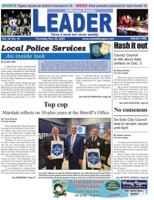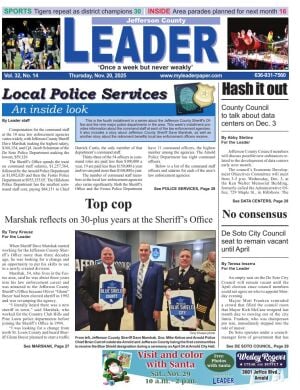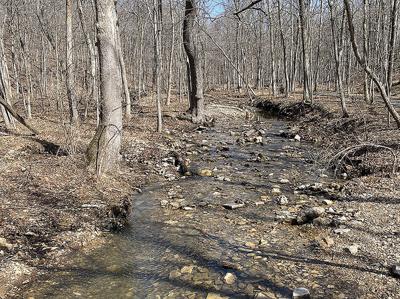While we cling to our rural roots and suburban subdivisions, Jefferson County continues to camouflage the fact that the natural environment in the St. Louis metropolitan area, including St. Louis city, spills over into our neighborhood.
The wildlife tell the story. Young, male black bears that disperse from their homes in the Ozark foothills remind us that we share space with them. Bears were spotted this spring in St. Charles County and St. Clair County in Illinois. Conservation agent Ben Bardot said several local sightings were confirmed this spring, including encounters in De Soto and at the Hilda Young Conservation Area in northwest Jefferson County.
An ongoing study in the St. Louis region, and across the country, evaluates the interactions between the expanding numbers of people and the original animal inhabitants of the land we call home. At 7 p.m. Friday, June 27, Powder Valley Conservation Nature Center in Kirkwood will host the St. Louis Wildlife Project for a presentation of results from its first five years of research data on what is wild and roaming in our area.
The project tracks everything that moves through a 25-mile-long corridor of parks and green spaces from the Gateway Arch National Park in downtown St. Louis to Route 66 State Park near Eureka. A partnership of local scientists and students will answer questions about how animals adapt to the environment we have built around them.
Other data collection sites along the route, from west to east, include Washington University’s Tyson Research Center, the World Bird Sanctuary, Emmenegger Nature Park, Powder Valley, Resurrection Cemetery, Francis Park, Tilles Park, River Des Peres, Tower Grove Park, Lafayette Park and Memorial Plaza.
The project uses motion-activated, night-vision cameras and audio recording devices to document mammals that live and move through the area. The goal is to promote understanding of how people and wildlife can coexist in urban settings. A video posted on the stlwildlifeproject.org website explains how the system works.
“The techniques for using camera traps are expanding rapidly, and people are using them more and more for wildlife studies,” said Elizabeth Biro, one of the Washington University scientists leading the study. “We use a lure and point the camera to that fatty acid tablet. It is supposed to lure in more rare things like foxes and coyotes, and it kind of frames them in the shot where the camera is pointing, so we can get a good look to identify them.”
The St. Louis Wildlife Project launched in 2018 as a collaboration between biologists at the University of Health Sciences and Pharmacy in St. Louis and Tyson Research Center. Their data collection and analysis are shared with the Urban Wildlife Information Network based at the Lincoln Park Zoo in Chicago.
Twenty metropolitan areas throughout North America conduct similar research to document and track urban wildlife. Other places in the network include Edmonton, Alberta, Canada; Long Beach, Calif., Little Rock, Ark.; Wilmington, Del. and Salt Lake City, Utah. By using consistent methodologies, the cities can coordinate and share relevant information.
“We have these giant urban areas that continue to expand and take up more land surrounding them,” said Solny Adalsteinsson, another Washington University scientist leading the project. “If we are to conserve biodiversity, we need to understand how we can better plan these cities to benefit wildlife and create more sustainable cities.”
While urbanization continues to turn natural habitat into housing for humans, the biodiversity of the region dwindles, but the remaining green space across parks, preserves, and river flood plains could sustain a variety of wildlife – if we learn to live together.
Doors open at 6:30 for the “St. Louis Wildlife – Five-Year Findings” presentation. Admission is free. Visitors may review exhibits, followed by the one-hour presentation at 7 p.m. Advanced registration for each attendee is required at http://short.mdc.mo.gov/4Fk. Children up to age 15 should be accompanied by an adult.
John Winkelman has been writing about outdoors news and issues in Jefferson County for more than 30 years and was the Associate Editor for Outdoor Guide Magazine. If you have story ideas for the Leader outdoor news page, e-mail ogmjohnw@aol.com, and you can find more outdoor news and updates at johnjwink.com.




